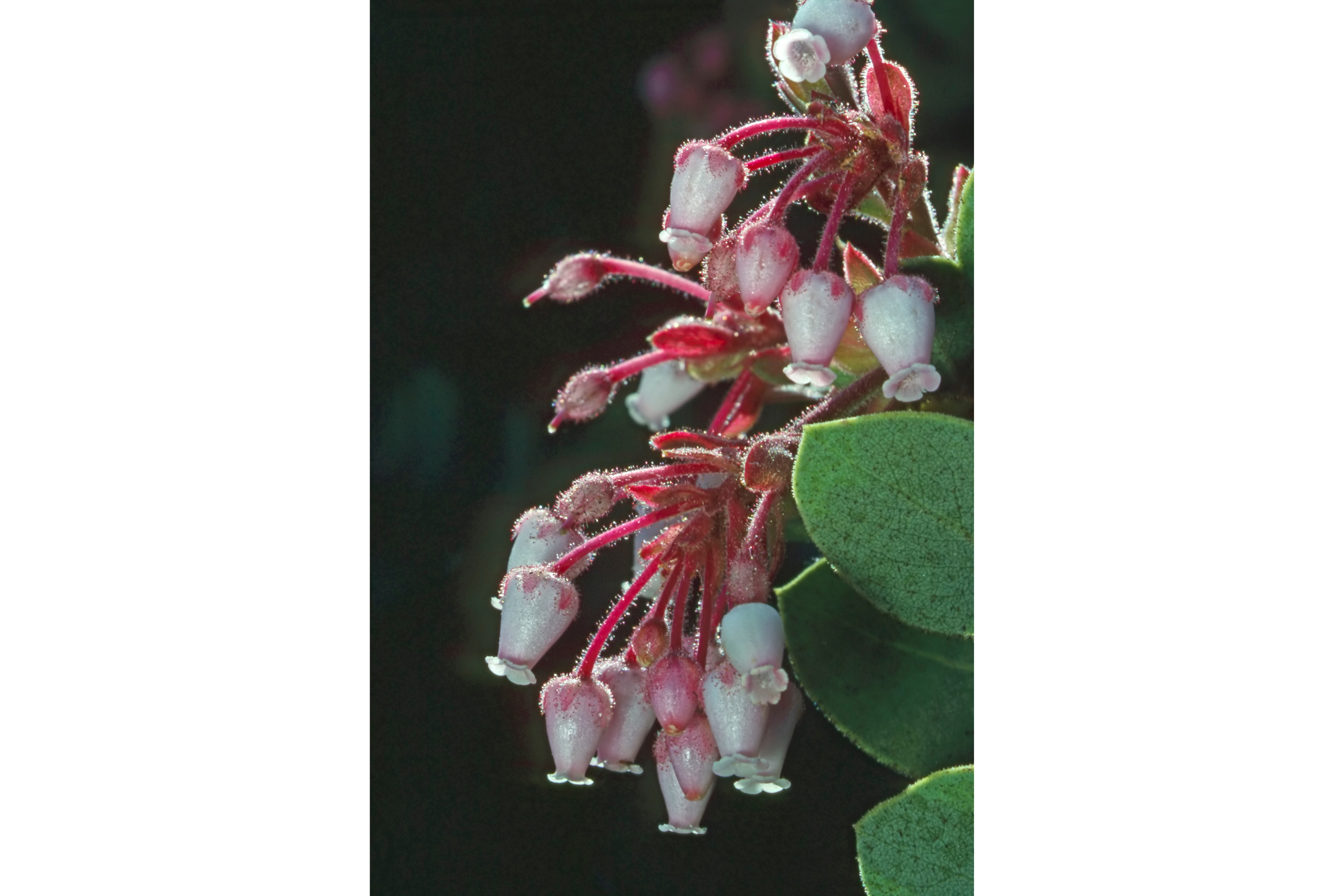Santa Catalina Island manzanita
(Arctostaphylos catalinae)

Description
Arctostaphylos catalinae, known by the common name Santa Catalina Island manzanita, is a species of manzanita native to Southern California. The plant is endemic to Santa Catalina Island, one of the southern Channel Islands of California. The plant grows in maritime chaparral habitats, on the ridges of Catalina Island. Arctostaphylos catalinae is a shrub usually exceeding 2 metres (6.6 ft) in height, sometimes taking a treelike form up to 5 metres (16 ft) tall. It is glandular and covered in white bristles. The leaves also have fine bristles. The dull, light green blades are up to 5 centimeters long by 3 wide. The flowers are borne in an open, branching inflorescence with leaflike bracts. The fruit is a spherical drupe up to 1.5 centimeters wide. Arctostaphylos is a genus of plants comprising the manzanitas and bearberries. They are shrubs or small trees. There are about 60 species, of Arctostaphylos, ranging from ground-hugging arctic, coastal, and mountain species to small trees up to 6 m tall. Most are evergreen (one species deciduous), with small oval leaves 1–7 cm long, arranged spirally on the stems. The flowers are bell-shaped, white or pale pink, and borne in small clusters of 2–20 together; flowering is in the spring. The fruit are small berries, ripening in the summer or autumn. The berries of some species are edible. Arctostaphylos species are used as food plants by the larvae of some Lepidoptera species including Coleophora arctostaphyli (which feeds exclusively on A. uva-ursi) and Coleophora glaucella. Manzanitas, the bulk of Arctostaphylos species, are present in the chaparral biome of western North America, where they occur from southern British Columbia in Canada, Washington to California and New Mexico in the United States, and throughout much of northern and central Mexico. Three species, the bearberries, A. alpina (alpine bearberry), A. rubra (red bearberry) and A. uva-ursi (common bearberry), have adapted to arctic and subarctic climates, and have a circumpolar distribution in northern North America, Asia and Europe. An unusual association of manzanita occurs on Hood Mountain, in Sonoma County, California, where stands of pygmy forest dominated by Mendocino cypress are found.
Taxonomic tree:







